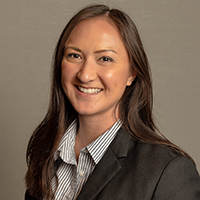
The Overlooked Fee Opportunity for Community Banks
Brought to you by Currencycloud

While many community banks offer some sort of foreign exchange or international payments capabilities to their customers, these experiences often leave a lot to be desired – and could be leaving business, and fee income, on the table.
A competitive and scalable payments program doesn’t have to be a giant undertaking for community banks. But in order to offer a competitive program, banks should ensure reasonable pricing, transparency and reliability. Bank Director chatted with Cara Hayward, director of strategic partnerships for North America at CurrencyCloud, to explore what banks are missing out on and how they can grow this business. This conversation has been lightly edited for length and clarity.
BD: Where are community banks when it comes to foreign exchange and the digitization of payments? Is this an area they should bother competing against bigger banks or non-bank financial companies?
CH: Community banks usually have some sort of foreign exchange offering, but it’s usually an afterthought and they often rely on a large correspondent bank for their service offering. Correspondents do provide a good service, but offer uncompetitive rates that don’t leave a lot of margin for banks to be competitive.
That means, a lot of community banks may not realize what demand for international payment or foreign exchange actually exists among their customers. Missing out on this fee income really hurts in an environment like we’re in today, since it’s harder to make money through lending.
BD: What kind of opportunities exist for community banks when it comes to foreign exchange and what does a modern offering need to be competitive?
CH: If a community bank wants to invest in this space to drive income, they need to think about scalability, reliability and cost.
When it comes to cost, there’s both the cost of goods sold and costs around supporting the business. Banks make money by marking up the rate they receive from their provider by a certain amount of basis points. The second cost is around supporting the business line. International payments do require the ability to manage payments in an operationally efficient and compliant way, and it’s important that partners are able to create processes that can be scalable and repeatable.
Reliability and transparency are related. Banks should look for partners that have technology that allows for as much transparency as possible, so when something goes wrong, there’s a robust support network.
BD: What do customers want from their community bank when it comes to international payments and transfers? Can community banks offer this?
CH: Customers that aren’t doing a ton of international payments or foreign exchange may not be sensitive to price or experience, and might just suffer through it. But customers that want or demand a better experience are moving away from community banks to fintech apps or larger banks. They’re looking for reliability and repeatability, competitive costs and transparency. They want to know their money is going to get where it’s going, and they want that to happen consistently.
Foreign exchange can often feel like a black box to customers. There are a lot of fees, they’re in tiny little prints and customers don’t know if what they’re getting is competitive. They want honesty and transparency about what the process is, what they should expect and what that cost is going to be.
Because businesses are doing more of their business online and cash flow is more important than ever, they require more when it comes to cross border transactions. Especially in the e-commerce market, technology, and imports and exports, there’s a need for that digitization of payments.
As community banks grow and try to move up market, they may go after larger and more-profitable corporate or industrial customers. That’s where they’ll see the demand for volume when it comes to international payments, and where costs start to make a difference to customers.
BD: What prevents foreign exchange from being a bigger part of community bank offerings? How do they change this?
CH: Oftentimes, its other competing projects. I totally understand that foreign exchange and international payments is not the biggest part of these banks’ business, but I don’t think they realize what they’re actually missing or where this potential business could go.
There’s a perception that foreign exchange and international payments are complicated and scary, but there are partners out there that do this. Community bankers should spend some time educating themselves on what is out there, and what are the costs and benefits of investing in a project like this as far as potential revenue.
For those that don’t offer it, starting small is the way to go. Do a proof of concept. Talk to different providers in the network, including fintechs and correspondent banks. Make sure to do your due diligence. Start with a small project: a couple of your best small- or medium-sized business customers that need this. Pick a partner that is going to handhold you through the process, support you and help you grow.
It’s a similar process for those looking to expand. They should think about the evolution of their current business in chunks – where do they want to be in one year, five years, 10 years – and pick partners that will support you through that process.



